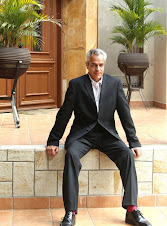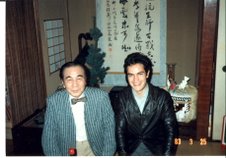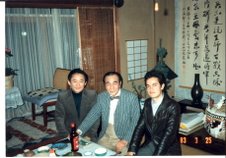En septiembre del mismo año, la Misa se presentó en el Teatro Municipal de Tucumán, Argentina, como parte del Septiembre Musical Tucumano. El coro mixto fue la misma Sociedad Coral, que aguantó un viaje largo y polvoriento por los caminos del Altiplano boliviano y el norte argentino. Los niños fueron los del Coro de Enseñanza Básica de la Provincia, y la orquesta fue la Orquesta Universitaria de Tucumán, con refuerzos de la Sinfónica de Bolivia, todos dirigidos por Mario Perusso, quien era entonces director titular de la Sinfónica de La Paz. En todas estas presentaciones la Misa fue recibida con gran entusiasmo del público, los intérpretes y la prensa. La única nota discordante fue una crítica demoledora del Grupo Aleatorio, publicada en Presencia de La Paz. Fuentes fidedignas me revelaron confidencialmente que los dos conciertos en el Teatro Municipal fueron los de mayor recaudación en todo el año 1978.
¿Por qué hablar ahora de esta obra de juventud, presentada hace treinta y dos años y después nunca más? Porque en el tiempo transcurrido han acontecido varias cosas en relación con la Misa de Corpus Christi.
En 1992, aplicando una autocrítica astringente, resolví conservar solamente las obras que pasaran un examen riguroso de calidad y realización técnica. Como resultado, puse en el basurero casi todas las partituras que había escrito antes de 1984. De la Misa de Corpus Christi se salvó sólo el Sanctus. Con el paso de los años he lamentado esta acción, sobre todo al pensar en algunas piezas, hoy irrecuperables, que ahora se insinúan en la memoria con algún valor y originalidad. Una sonata para violín y guitarra, por ejemplo, quisiera haberla oído antes de destruirla. En cuanto a la Misa, la he re-evaluado muchas veces en la memoria, y he llegado a la conclusión de que fue injusto desecharla. Recordando que había sido mi obra de tesis para egresar del Taller de Música de la Universidad Católica, en un viaje a La Paz en 2002 obtuve en préstamo la copia conservada en los archivos universitarios, con la promesa de devolver una partitura confeccionada profesionalmente, ya que la existente era un manuscrito a lápiz.
Gracias a esta partitura prestada revivía para mí una obra que había dado por perdida, que ahora, en un contexto más largo, representaba el momento cimero de mi trabajo en Bolivia antes de mi salida del país. Por eso me resulta inexplicable este hecho: cuando quise ponerme a elaborar la partitura en limpio que había ofrecido a la UCB, no pude encontrar la partitura que me había prestado.
Antes de la popularización de los sistemas computarizados de notación, el objeto físico de la partitura tenía un valor irreemplazable. Mis partituras eran tal vez mis posesiones más preciadas, y ésta, que había echado de menos por diez años y que una vez recuperada ni siquiera era mía en lo material, era sin lugar a dudas un artículo valiosísimo. Era inexplicable que lo hubiera perdido.
Cuando, unos años después, el director de orquesta cochabambino Augusto Guzmán me propuso presentar la Misa de Corpus Christi en Cochabamba, emprendí otra búsqueda por todos los lugares imaginables en mi casa y en mi oficina, pero sin éxito. Tuve que resignarme a pensar que había perdido por segunda vez la misma obra.
Me quedaba por lo menos una grabación casera, en cassette, del concierto en Tucumán, única prueba tangible de la existencia de mi Misa. Con el hábito celoso de muchos años, guardo todas las grabaciones de mi música juntas en un mismo lugar, y nunca presto originales; son demasiado preciosos para desprenderse de ellos. ¿Cómo explicar, entonces, el que este cassette también, éste sí, último sobreviviente de una serie de desapariciones, haya desaparecido? ¿Qué clase de conspiración era ésta? ¿Una rebelión concertada de los objetos inanimados para demostrarme que la Misa estaba, a fin de cuentas, destinada a desaparecer?
Con la propuesta de Augusto, la Misa y su ausencia adquirían otro tinte, podríamos decir, más social. Tres décadas atrás, Augusto era un niño de primaria, y como tal participó en el estreno de la Misa, en su calidad de miembro del Coro de los Niños Cantores del Valle. El que él, ahora director de profesión, me comunicara su aspiración de montar esta obra en Cochabamba, me mostraba el potencial de la Misa como algo ligado a una generación de laredistas como llamamos a los alumnos y exalumnos del Instituto Laredo. Hipotéticamente hablando, si, como Augusto, hubiera otros que también recordaran haber cantado la Misa y que estuvieran deseosos de volver a cantarla, esta vez en el coro adulto, sería posible atribuir a esta obra un valor representativo que antes yo no había considerado. Si el número de estos exalumnos fuera lo suficientemente grande, podría inclusive hablarse de un movimiento generacional, para el que la Misa de Corpus Christi representa algo digno de ser revivido treinta años más tarde.
Este razonamiento me llevó a un pensamiento envanecedor y al mismo tiempo vergonzoso: que la Misa de Corpus Christi no me pertenecía sólo a mí. Se la debía a otros, no sólo a la Universidad Católica Boliviana sino a ese grupo indeterminado de coristas perseverantes agrupados en torno al Instituto Laredo. Por lo tanto, puesto que había desechado el original, perdido la copia y extraviado la grabación, era imperativo reconstruirla.
Para la reconstrucción me basé en una copia parcial del Kyrie, el Gloria y el principio del Credo que había iniciado en 1983, y el original del Sanctus que había eludido la destrucción de 1992. Parte del Credo la tuve que reconstruir de memoria. Cuando le tocó el turno al Agnus Dei, estaba ya en posesión de una copia escaneada de la partitura coral, con las líneas vocales sin acompañamiento, que me había facilitado el Instituto Laredo.
La copia parcial de 1983 era un documento poco fiable. La había empezado a mi retorno del Japón, cuando creía haber aprendido mucho de orquestación y tenía nuevas ideas sobre empastes y otras combinaciones tímbricas que me parecían más actualizadas que la versión original. La copia está, pues, llena de retoques y mejoras de criterio dudoso. Al re-escribir el Kyrie y el Gloria en 2010, por supuesto que después de tantos años no tenía un recuerdo fotográfico del original perdido, pero sí suficiente familiaridad residual de la obra que había ensayado y dirigido tres veces para sorprenderme ante detalles que no reconocía. Intenté, pues, restituir lo que creía que había sido mi intención original, aunque consciente de que iba en pos de una visión elusiva.
La copia parcial termina en el Credo, poco antes de la recapitulación temática con las palabras Et in Spiritum Sanctum. Cuando llegué a este punto del trabajo no había recibido aún la copia escaneada de las líneas vocales, de modo que el tercio final del Credo fue necesario reconstruirlo de memoria.
El Agnus Dei siempre me había parecido el más problemático de los cinco movimientos. Uno de los defectos más claramente recordados era la larga introducción instrumental que pretendía representar la decadencia y el caos de la vida contemporánea. Además de la anomalía de tener un pasaje orquestal extenso en una pieza litúrgica, en lo estilístico esta sección difería radicalmente del resto de la Misa, y su orquestación tenía toques experimentales que en 1978 me habrían parecido innovadores, pero pronto sabría que en realidad le ponían fecha a la Misa, y con varias décadas de retraso. Por eso en 2010, al hacer el esfuerzo de rehacer lo hecho largo tiempo atrás, fue un alivio omitir esa sección orquestal.
De principio a fin, el trabajo de reconstrucción me puso en una posición inusitada de actuar como musicólogo de mi propia música. Las décadas de experiencia me han dado una visión muy distinta de lo que vale y lo que no, pero en este proyecto no se trataba de componer como yo ahora, sino de recrear lo que había creado un mozalbete en 1978. Era imposible reemplazar la música, o partes de ella, con música nueva, porque yo ahora no puedo ni quiero componer una obra con esas características. La música de 1978 era un resultado singular de ese momento y de las circunstancias que le dieron vida. Cualquier intento de reemplazar pasajes imperfectos con otros que concuerden con el estilo de entonces habría sido un pastiche deshonesto. Mi misión, pues, era otra: era copiar lo más fielmente posible la imagen que me mostraban, en primer lugar, la memoria, y, en segundo lugar, las piezas de rompecabezas con las que contaba.
Al desempeñar ese trabajo, experimenté una resistencia interior invencible hacia ciertos acordes y ciertas combinaciones orquestales. Los conozco bien y sé que no funcionan a mi gusto. ¿Qué hacer con ellos? Los paladines del rigor me dirán que habría sido lo más honrado dejarlos como estaban, pero la honradez tiene un límite. Cuando se trata de un producto artístico, las consideraciones primordiales son la calidad y la integridad artísticas. ¿Cómo dejar pasar en una obra propia deslices que a mis alumnos no permito? Cabe recordar que escribí la Misa joven y solo, cuando el Taller de Música se había disuelto y ya no había tuición para nadie. Frente a esta oportunidad de rehacer una obra de juventud ahora que sé diferenciar entre la frescura juvenil, la audacia y la torpeza, sería artísticamente deshonesto dejar pasar la tercera de esas tres características junto con la primera y la segunda: he corregido, pues, acordes y transiciones, y he simplificado orquestaciones que me han parecido demasiado torpes para dejar pasar.
En resumen, la obra que se presentará en Cochabamba el 28 y 29 de octubre es una reconstrucción de la Misa de Corpus Christi de 1978, pero con diferencias importantes. Hay secciones que no pueden ser idénticas porque las he rehecho de memoria. Otras las he mantenido prácticamente intactas, como el Kyrie y el Sanctus en su totalidad, no porque me parezcan perfectos sino porque su estética me resulta ahora demasiado ajena para interferir con ella. El Agnus Dei contiene los cambios más drásticos, forzados por la necesidad de recrear el material orquestal perdido.
Recuerdo un artículo escrito en 1978 por el siempre solidario Ramón Rocha Monroy y publicado en Opinión, bajo un título parecido a “¿Cuándo oirá Cochabamba la Misa de Corpus Christi?”. Si le hubieran dicho que la respuesta era treinta y dos años más tarde, habría parecido una crueldad, y en cierto sentido lo es. Han sido años de olvido, el cual, después de tanto trabajo empeñado por tantas personas, es cruel. En este último año ha sido difícil encontrar el tiempo para rehacer la obra, y los desvelos han sido crueles también. Pero los giros que ha dado la historia tienen su lado hermoso. Ahora el material está en manos de los elencos artísticos cochabambinos. Además del mencionado Augusto Guzmán, están involucrados Bertha Artero Ponce en la preparación del coro mixto, Judith Carmona en la preparación del Coro de Niños, papel que desempeñara con gran solvencia en 1978, e instigando y promoviendo, el inspirado nuevo director del Instituto, Franklin Anaya Georgis. Y por supuesto un grupo considerable de músicos orquestales y coristas de ambos sexos, adultos y niños. Veamos cómo les va.





